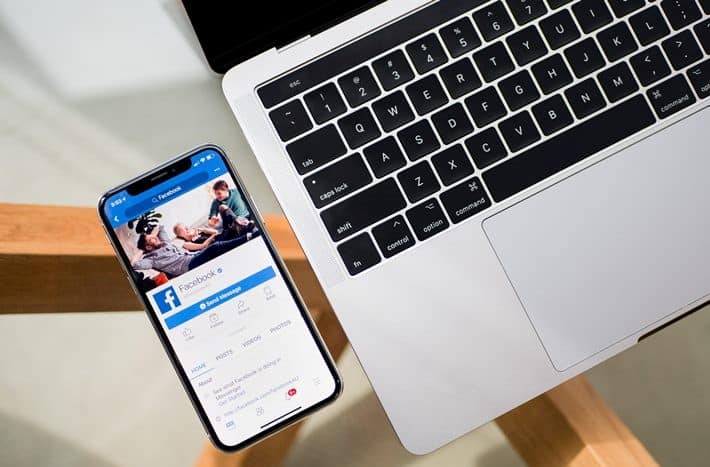
Application Development Life Cycle
Mobile apps are the driving force in the world today.
Every major and minor industry has collaborated with mobile applications development to expand their horizons to a greater audience and platforms.
As a result, most users expect companies and brands to develop mobile apps or websites that are mobile-friendly.
Whereas, of the total time spent on mobile phones, 90% is taken up by mobile apps.
While this demands every business to develop a mobile app to maximize their success and growth margins, it also requires us to understand the software development cycle of a mobile app.
So, this article details the app development life cycle that some of the well-known companies implemented for mobile app development in NYC
What is Applications Development Life Cycle?
Application development life cycle, or ADLC, is an alternative used term for Software development life cycle (SDLC), which refers to the step-by-step process of developing a complete and successful mobile app.

Types of Mobile Applications
In most cases, the development life cycle for a mobile app depends on the type and nature of the mobile app which is mainly based on the programming language for mobile apps. For instance, there are six major types of mobile applications developed to provide dedicated services and offer functionalities to the users. App development may vary according to the operating systems they support. In this regard, we have iOS vs Android development. The commonly known mobile app types include:
- Native apps
- Hybrid/ Cross-platform apps
- Progressive web apps
- Encapsulated apps
- Frameworks and libraries
The main competition is usually between native vs cross-platform apps. Meanwhile, for most of the mobile app types, the app development life cycle remains the same; here are the steps generally included in a mobile app development life cycle;
- Planning and Research
- System design and Architecture
- Specifying App Technicalities
- Prototyping
- Development
- Testing and Quality Assurance
- App Launch
- App Marketing Strategies
- Maintenance
- Let’s have a detailed look at each one of the steps of this development cycle.
The Stages of App Development Life Cycle
This is what a highly functional and result-driven mobile app development life cycle looks like. It applies to most app development projects irrespective of the type and nature of the app.
#1 Planning
In the first stage of mobile app life, the intent is to conduct market research and derive results that can help nurture and strengthen the app idea. This includes studying existing products, researching market strategy, and analyze user’s requirements.

Since your purpose in developing an app is to attract a strong user base and generate revenues, evaluating and planning your strategy is always essential. Conducting market research and analysis helps in effective strategizing of your plan.
The deliverables of this stage are usually an app development plan and a business analysis report that ultimately help in detailing further requirements.
Moreover, this step also helps develop a project charter that specifies all the essential details and technicalities of the project.
#2 System Design and Architecture
Since design is the first point of contact for your users with your mobile app, it is essential to strategize on it adequately.
The design specifications may differ based on the nature, type, and purpose of the app. Moreover, the development approach has a great part to play in design specification as well.
For instance, if you plan to develop a native app, the UI specification must abide by the specific mobile OS. Also, it must ensure the features are well-collaborated in the app to avoid any technical discrepancies.
However, if you plan to develop a cross-platform app to work on Android and iOS devices, the design specifications and techniques would differ. You would have to ensure that the incorporated features are supported on both OS and do not result in any technical discrepancy.
Moreover, this stage also refers to aligning the overall design flow and elements incorporated to suit the type and purpose of the application.
#3 Specifying App Technicalities
Finalizing your app development technicalities basically refers to getting all the technological aspects aligned. As every app has a different purpose of serving, the technologies required to develop it differ accordingly.

For instance, if you are developing a 3D mobile game app, you require technical tools that support 3D enablement such as game engines, development tools, databases, servers, and resources, etc.
However, if you plan to develop an online food delivery or taxi booking app like Uber, the requirements would be completely different.
So, based on your app requirements and nature, specify what tools, techniques, databases, and server resources your app would require.
The individual deliverables of the three steps mentioned above result in the collective development of a project charter that details all the essential app development aspects. The project charter commences the actual development process and helps in the streamlined development of the mobile app.
#4 App Prototyping
Mobile app prototyping is one of the essential steps of the entire app development cycle. Since the step is based on the project charter, it assists the development team, stakeholders, and app owners validate the implemented approach.
Prototyping refers to developing an initial visual representation of the mobile app to be developed. The deliverable of this step includes a blueprint of the mobile app that is easy to evaluate and test against the specified requirements.
Prototyping the app also gives a clear idea of whether the specified requirements and technicalities coordinate with each other or not. Also, whether the specified design aspects as operational or not.

The App prototyping stage may include
- A detailed sketch of the app entailing all the essential aspects of the mobile app, including functions, operation logics, layouts, the flow of pages, etc.
- A functional wireframe to evaluate the structure of the mobile app
- A clickable prototype that helps to identify the flaws and gaps in the application logic and functions.
#5 App Development
Once the errors and flaws in the initial app plan are identified and corrected using the prototype, the next step is to start coding the actual app.
The development stage is the crucial and most dreading stage of the app development life cycle. Therefore, it requires maximum time and effort from the entire team.
Furthermore, the step is majorly divided into two major parts, frontend development and back-end development of a mobile app.
Frontend development refers to designing the overall layouts of the app, which enables interaction with users. It also caters to integrating the layout to the app’s back-end code to ensure the app runs smoothly and serves the purpose well.
Back-end app development requires developers to put their best foot forward and implement techniques that ensure maximum app functionality and performance. Implementing relevant and applicable logics and functions, integrating libraries, and downloading plugins all go into it.

Since mobile apps include several modules and sub-modules, the back-end development also refers to streamlined development and integration of each module without any functionality halt in the app.
#6 App Testing and Quality Assurance
The testing phase is where the project charter is employed to ensure that all the mentioned design and development specifications are included in the app.
Before publishing the app, several app testing processes are conducted to evaluate app performance from every aspect and highlight any fixes and issues. The important testing and QA procedures include; functional test, usability test, compatibility test, beta testing, etc.
The testing and QA processes help evaluate design and development issues in the app to ensure the final product does not include any functional flaw.
Moreover, other testing procedures like safety testing and resource testing helps in ensuring all the safety and preventive measures are in place to secure user data. Also, it helps in identifying and evaluating the app’s performance in the absence of essential resources such as an internet connection or low battery.
#7 Launching Your App
The next step in the app development life cycle is to finally publish your app on the app store. Now, this may differ accordingly for native and cross-platform app developers.
As per your app platform, the first step would be to create a developer’s account on the app store (either Google Play Store or Apple iTunes App Store).

Secondly, it is also important for developers to acknowledge and abide by the rules of the app store while publishing their app.
Do you imagine how many businesses have overcome all the challenges and establish their firm presence in the market? Why don't you take the step forward and share your digital needs?
#8 App Marketing Strategy
The marketing strategy is not directly a part of the mobile app life cycle; however, it is certainly a crucial part of the overall app lifecycle after it is published.
This step caters to implementing techniques and ideas that could enhance the presence and visibility of your mobile app on the app store.
Now, if you are wondering why it is important? Here’s why;
Since you have developed and launched your app to be used by your target audience, it is only possible to use it if they see it. So, implementing marketing strategies like App Store Optimization, Community building, or using social media to give shoutouts can help you strengthen your app’s presence among your audience.
Moreover, further benefits that an app marketing strategy has included;
- Increasing the number of app downloads.
- Maximizing the organic growth of the app.
- Boosting the app conversion rates.
- Strengthen the app’s overall position in the competitive market.
#9 App maintenance and Updates
Implementing several marketing strategies such as ASO may be essential to increase the conversion rate, but it is never enough.

Your users need the features, UI, functionalities, and overall performance of your app to stick around your app. Therefore, it is always beneficial to keep the app functions aligned and avoid discrepancies and uninstalls.
This leads to regularly schedules app maintenance and update procedures. The app maintenance process is one of the longest and promising stages in the mobile application development lifecycle as it gives you the room to highlight the issues and correct them accordingly.
Again, how much you need to stress on app maintenance depends on the type and nature of your mobile app. Also, it helps you to cater to your customer’s feedback and requirements.
Wrapping Up
The mobile development life cycle refers to a systemic process of researching, designing, developing, testing, and successfully deploying the app on the app store for the users. Each step is interconnected via a set of deliverables that act as the input to the next.
The last and the most prolonged stage of this development life cycle is the maintenance stage, which is applicable after the app is launched to the app store. This stage regularly updates the app’s functional, design, and performance aspects to provide a seamless experience to app users.
Following through the mobile app lifecycle helps the entire mobile app team stay connected to the app’s core purpose and streamlined their performance adequately to avoid any performance issues.

Article by:
Guest Blogging Team
Published on:
June 18, 2021
Last updated on:
August 10, 2021


